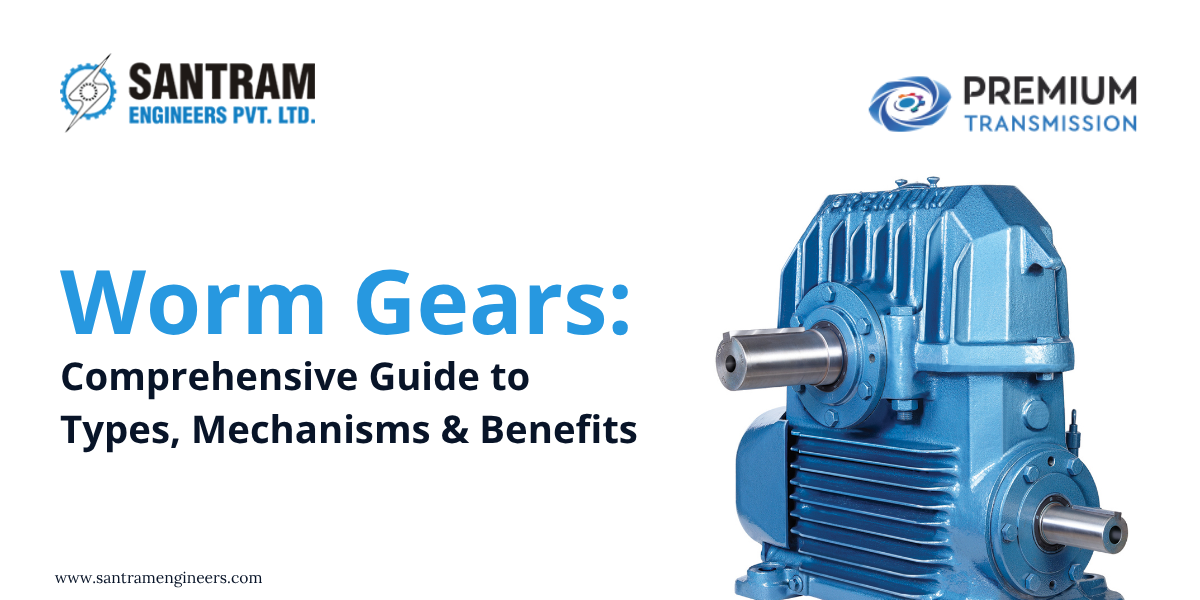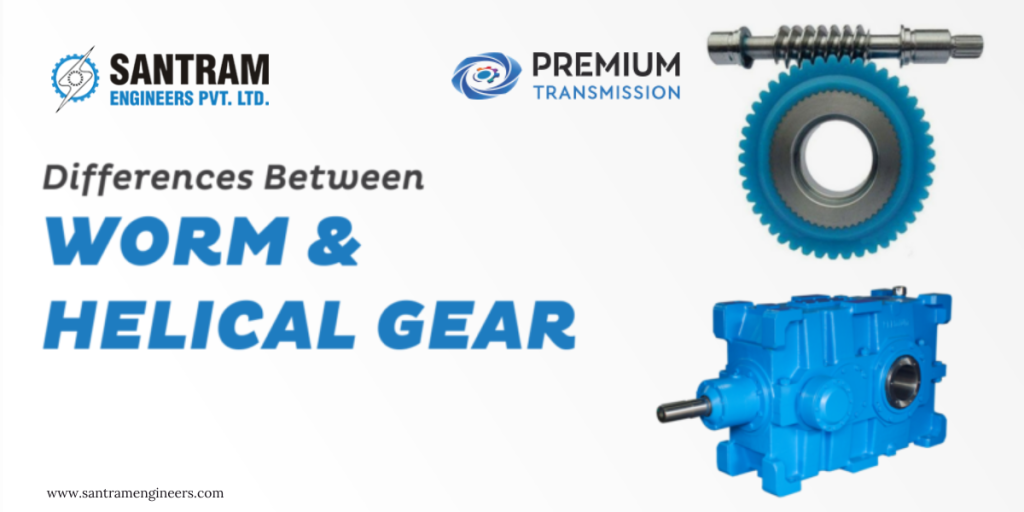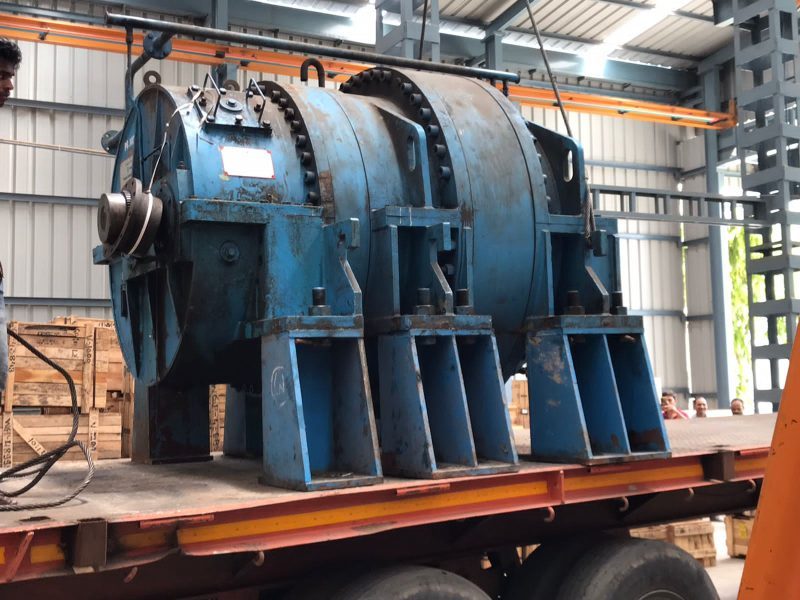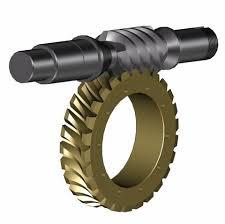Worm gears are a vital component in many industries, providing high gear reduction in compact spaces. Whether you’re exploring industrial worm gears for heavy machinery or seeking high-performance worm gears for precision equipment, understanding their design, functions, and advantages is crucial. This guide offers an introduction to worm gears, details types of worm gears, explains the worm gear mechanism, highlights key benefits of worm gears, and outlines common worm gear applications.
What Are Worm Gears? (Introduction to Worm Gears)
A worm gear consists of a worm (a screw-like gear) meshing with a worm wheel. Unlike traditional gear pairs, worm gears can achieve significant reduction ratios—sometimes up to 100:1—while maintaining a small footprint. Their unique configuration offers self-locking capabilities, smooth operation, and quiet performance, making them ideal for a broad range of engineering applications.
How Worm Gears Work (Worm Gear Mechanism)
The Basic Principle
A worm resembles a standard screw, and the worm wheel is akin to a helical gear. When the worm rotates, its threads drive the worm wheel, causing it to turn. The angle of the thread (lead angle) determines speed reduction and torque multiplication.
Self-Locking Feature
One defining characteristic of many worm gear setups is self-locking: the worm wheel cannot drive the worm. This back-driving prevention adds safety in lifting or braking applications, as the gear set holds position under load without additional braking systems.
Efficiency Considerations
Efficiency varies with materials, lead angles, and lubrication. Typical efficiencies range from 30% to 90%. Materials like bronze for the worm wheel paired with hardened steel worms reduce wear and optimize performance.
Types of Worm Gears
Selecting the right type of worm gear is key to achieving desired performance. Here are the main categories:
1. Single-Thread Worm Gears
- Definition: One-start or single-thread worm engages one tooth on the worm wheel per revolution.
- Characteristics: High reduction ratio, strong self-locking, but lower efficiency due to greater friction.
- Use Cases: Lifting mechanisms, garage door openers.
2. Multi-Thread Worm Gears (Double/Triple-Start)
- Definition: Multiple threads on the worm engage multiple teeth simultaneously.
- Characteristics: Higher efficiency and smoother motion, but reduced self-locking at high starts.
- Use Cases: Conveyor systems, rotary tables where speed is prioritized.
3. Non-Throated vs. Throated Worm Gears
- Non-Throated: Flat flanks, simpler and more cost-effective but higher contact stress.
- Throated: Curved flanks that match the worm wheel tooth profile, offering greater load capacity and extended service life.
4. Enveloped Worm Gears
- Definition: Both the worm and the wheel have curved, enveloped surfaces for expanded contact area.
- Characteristics: Superior load distribution, high torque capacity, often custom-fabricated.
- Use Cases: Heavy machinery, mining equipment.
Benefits of Worm Gears (Worm Gear Advantages)
Worm gears present several distinct advantages over other gear types:
- High Reduction Ratios in Compact Sizes: Achieve large speed reduction without bulky multi-stage gearboxes.
- Self-Locking Capability: Enhances safety and load-holding capability without additional braking.
- Quiet and Smooth Operation: Ideal for noise-sensitive environments like robotics and conveyors.
- Shock Load Resistance: Throated and enveloped designs distribute stress evenly, improving durability.
- Versatile Material Pairings: Commonly bronze and steel pairings optimize friction and wear characteristics.
Fast Tip: For best performance, pair a hardened steel worm with a bronze wheel and ensure proper lubrication with synthetic gear oils.
Common Worm Gear Applications (Worm Gear Applications)
Worm gears power a diverse array of systems, including:
- Material Handling Equipment: Conveyor drives, lifts, and hoists benefit from self-locking and compact design.
- Automotive Systems: Steering mechanisms and actuators use worm gearing for precise control.
- Robotics & Automation: Provide smooth, backlash-minimized motion in pick-and-place machines.
- Elevators and Lifts: Safety-critical self-holding features eliminate drift under load.
- Rotary Tables & Indexers: Achieve accurate positioning in CNC machines and factory automation.
Industrial Worm Gears: Key Selection Criteria
When specifying industrial worm gears, consider:
- Reduction Ratio: Match lead angle and thread count to speed and torque requirements.
- Material Selection: Steel/bronze pairings for durability; stainless steel for corrosive environments.
- Lubrication: Use high-viscosity, pressure-stable oils to reduce friction and wear.
- Mounting Configuration: Ensure proper alignment to minimize axial and radial loads on bearings.
- Thermal Management: In high-speed or heavy-load applications, incorporate cooling systems or heat-dissipating housings.
Designing for High-Performance Worm Gears
For high-performance worm gears, advanced considerations include:
- Precision Machining: Tight tolerances reduce backlash and enhance efficiency.
- Surface Treatments: Case-hardening, nitriding, or DLC coatings increase fatigue strength.
- Enhanced Lubricants: Synthetic gear oils with EP additives maximize life and efficiency.
- Integrated Sensors: Condition monitoring sensors track temperature, vibration, and wear for predictive maintenance.
FAQs about Worm Gears
Q1: How does a worm gear differ from a spur gear?
A worm gear transmits motion through the sliding contact of a helical screw and wheel, offering high reduction ratios and self-locking. Spur gears rely on direct tooth meshing, providing higher efficiency but limited reduction.
Q2: Can worm gears be back-driven?
Most single-thread worm gears are self-locking and resist back-driving. Multi-start worms with higher lead angles may allow back-driving under load.
Q3: What lubrication is best for worm gears?
Synthetic gear oils with extreme-pressure (EP) additives and viscosity suited to operating temperature are ideal. Regular oil changes extend gear life.
Q4: Are worm gears suitable for high-speed applications?
While efficient at low to moderate speeds, worm gears can generate heat and lose efficiency at very high speeds. Active cooling or specialized materials may mitigate these issues.
Q5: How long do worm gears last?
Service life depends on materials, loading, lubrication, and alignment. Properly maintained systems can operate for tens of thousands of hours.
Contact Us for Expert Worm Gear Solutions
At Santram Engineers, we specialize in providing high-performance worm gears tailored for industrial applications. Whether you’re looking for precise motion control, compact gearing solutions, or enhanced load-handling capabilities, our engineering team can help you choose the right worm gear for your needs.
We offer a range of standard and customized worm gearboxes to meet the specific requirements of your machinery and operations. Backed by decades of experience, we bring reliability, quality, and performance to every gear solution we deliver.
Ready to integrate top-quality worm gears into your equipment? Contact Santram Engineers for expert guidance, custom solutions, and precision manufacturing.
Call us at +91 96247 39393 or email sales@santramengineers.com to discuss your project requirements today.





